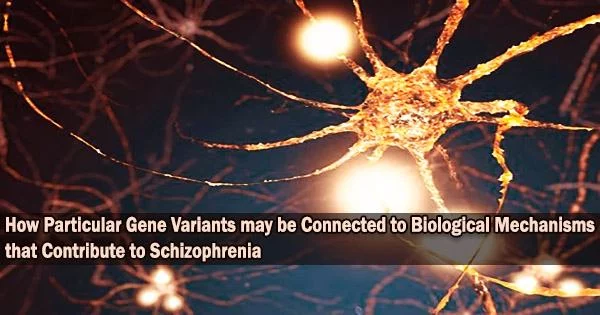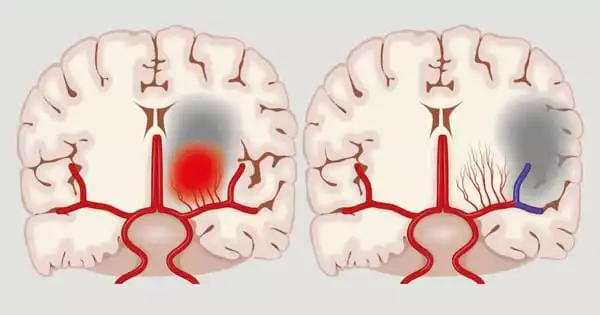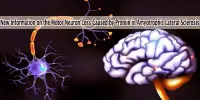There are several genetic variations that have been found to be associated with an increased risk for schizophrenia. These include variations in genes involved in the regulation of neurotransmitters, such as dopamine and glutamate, as well as variations in genes involved in brain development and function.
Hundreds of researchers have offered the most complete picture to date of how differences in the human genome increase the risk of schizophrenia with the release of two studies in the journal Nature.
Moving from the identification of “risk locations” in the genome to actual biological processes affected by mutations in these regions that specifically contribute to the causation of the illness is what has always been the most elusive and potentially useful aspect of schizophrenia genetics, and this is what the new papers shed intriguing light on.
The two papers are based on the coordinating work of two international consortia. One group, the Psychiatric Genomics Consortium (PGC), researches genetic variations that are frequently seen in the general population and are statistically linked to slight increases in the risk of schizophrenia. The other group, called Schizophrenia Exome Meta-Analysis (SCHEMA), focuses on rare variations in the genome associated with increased schizophrenia risk.
“Psychiatric disorders have been a black box for a long time,” said Tarjinder Singh, Ph.D., of Columbia University. But “genomic technologies, sequencing infrastructure, and computational tools” used in the two studies “have advanced dramatically,” he noted, making new insights possible.
Over the past ten years, the PGC has laboriously gathered a cohort of more than 320,000 people, of whom 76,755 have been diagnosed with schizophrenia and over 243,000, acting as controls, are healthy. The larger the size of the cohort, the more statistical power the analysis can have.
The PGC performs what are called GWAS (genome-wide association studies) looking for locations (“loci”) in the genome where variations in the human DNA sequence are associated with some amount of increased risk, in this case, for schizophrenia.
The new paper by the PGC brings the number of such “risk loci” to 287, which the team found were concentrated in genes expressed in neurons of the central nervous system but not in other tissues or cell types.
A common disease-linked variant occurs in at least 1 in 100 people. Most of the schizophrenia-associated common variants uncovered so far have frequencies higher than 1 percent; some, in fact, are carried by 95 percent or more of the population, notes Dr. O’Donovan.
Every person alive therefore likely carries multiple common risk variants, he explains, although in most individuals, the total risk for schizophrenia is about 1 percent. It is yet unknown how specific variant combinations may significantly raise risk in some people or how they may combine with other contributing factors, such as environmental ones, to cause the illness.
Much of the interest in the paper published by the SCHEMA group is that it gives a plausible view of how specific gene variations may be implicated in biological processes that help cause schizophrenia.
The analysis is based on the discovery of 10 uncommon gene variants and a small number of identified genes (roughly, in 1 in 10,000 human beings). These variants dramatically enhance the likelihood of developing schizophrenia, from several-fold to as much as 50-fold (at which point, there is about a 50 percent chance a carrier will develop schizophrenia), in those who carry them.
SCHEMA’s dataset substantially overlaps with the PGC sample, consisting of 24,248 people diagnosed with schizophrenia and over 97,000 controls without schizophrenia. Unlike GWAS studies, which look at the entire genome, the SCHEMA dataset reflects analysis of only the exome.
The exome is a small fraction of the entire genome that makes up roughly 2 percent of it and contains the genes that produce the vast majority of the body’s proteins. (Ninety-eight percent of the genome is not involved in encoding proteins; much of it is thought to regulate how much, when, and where specific proteins are produced).
Many of the “risk loci” identified in GWAS studies and associated with some amount of heightened schizophrenia risk are located in the “non-protein coding” portion of the genome, and its biological significance remains a subject of intense study.
The reliability of this study is increased by the reappearance in the current PGC paper of earlier hints connecting some common risk areas in schizophrenia with issues at the synapse, the gaps across which neurons in the brain communicate.
The SCHEMA study also found links with the synapse. Researchers were able to identify specific sorts of mutations in each of the 10 genes found in the SCHEMA study, which can affect both protein production and function in addition to being protein encoders.
One gene identified in the SCHEMA analysis (and also seen in the PGC’s survey of common variants) is called GRIN2A. It encodes a part of the cellular receptor for the neurotransmitter glutamate.
Synaptic dysfunction, possibly in neurons susceptible to excitatory glutamate impulses, is one idea for the pathophysiology of schizophrenia. The SCHEMA discovery of rare mutations in GRIN2A and in another gene called GRIA3 are solid genetic evidence of this mechanism in schizophrenia causation and or dysfunction.
Intriguingly, GRIN2A activity in the brain peaks during adolescence, which is the time, typically, when people who develop schizophrenia begin to have symptoms.
To the extent that there is overlap in the small number of genes so far identified by the SCHEMA group and the common variants identified by the PGC, there was also “some amount of overlap in the stories that the common and rare variant associations were telling us,” according to Benjamin Neale, Ph.D., of the Stanley Center.
Additionally, genetic variations in certain regions of the genome, called copy number variations (CNVs), have also been linked to a higher risk for schizophrenia. However, it is important to note that while these genetic variations may increase the risk for schizophrenia, they do not cause the disorder on their own, and other factors such as environmental influences also play a role.
















